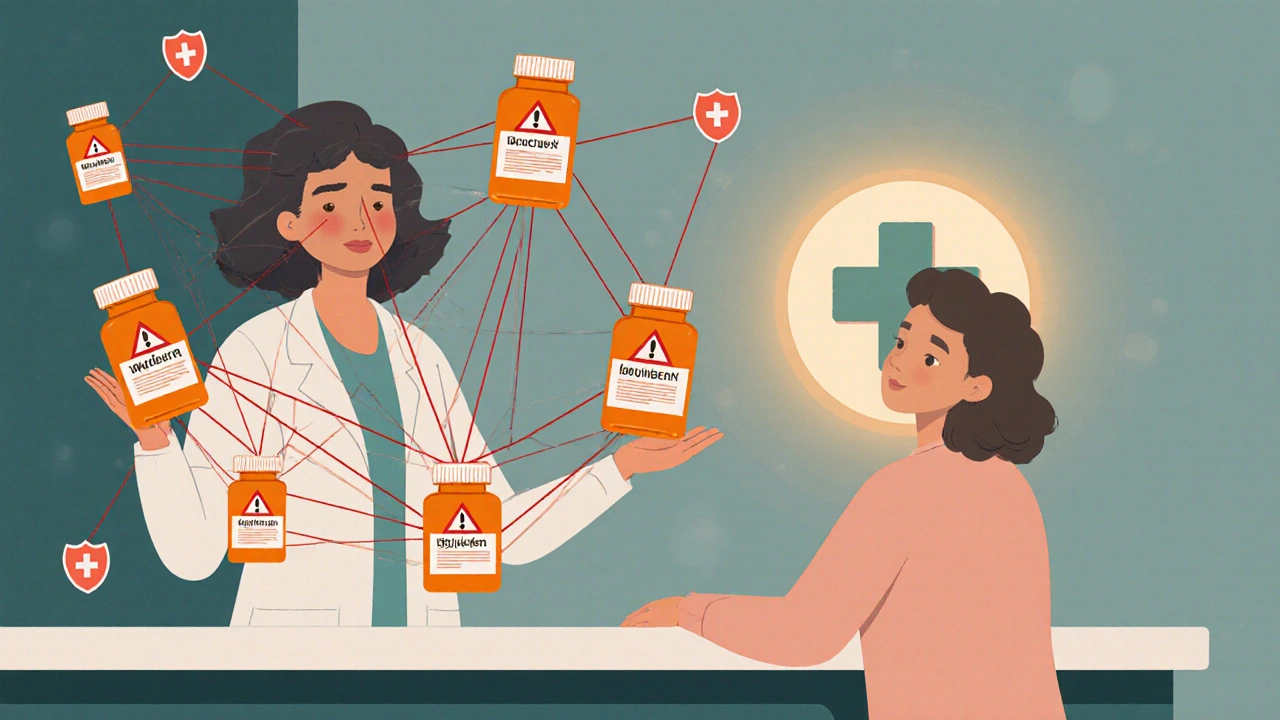Pharmacy Coordination: How Teams Work Together to Keep Medications Safe
When you take multiple medications, pharmacy coordination, the organized process where pharmacists, doctors, and patients align on drug use to avoid harm. Also known as medication reconciliation, it’s not just paperwork—it’s the difference between staying healthy and ending up in the hospital. Think of it like a relay race: your doctor prescribes, the pharmacist checks for conflicts, and you follow through. If any handoff fails, you’re at risk. A 2023 study found that nearly 30% of medication errors in older adults happened because no one connected the dots between prescriptions from different providers.
drug interactions, when two or more medications react in harmful ways inside your body are one of the biggest threats. That’s why pharmacy coordination isn’t optional—it’s essential. For example, if you’re on metformin for PCOS and also take magnesium supplements, those two can cancel each other out. Or if you’re using Rhinocort nasal spray and topical steroids, your skin and nasal tissues could thin out over time. Without someone tracking all your meds together, these risks fly under the radar. Pharmacy coordination pulls all your prescriptions into one view, flags clashes, and tells you when to space doses—like keeping magnesium at least two hours apart from osteoporosis drugs.
medication safety, the practice of using drugs correctly to avoid harm depends on this system. It’s not just about avoiding overdoses—it’s about making sure your antibiotics stay effective, your blood pressure meds work as intended, and your travel letters for controlled substances are ready before you fly. When you use a medication log to track what you take, when you take it, and how you feel, you’re doing part of pharmacy coordination yourself. But the real power comes when your pharmacist, doctor, and pharmacy system all talk to each other. That’s how you catch a generic switch that’s not working, spot signs of steroid damage, or realize your caffeine is making you dizzy because of a new antidepressant.
Pharmacy coordination doesn’t need fancy tech. It needs clear communication. It’s the pharmacist calling your doctor when your blood pressure drops after switching from Hytrin to tamsulosin. It’s the nurse reminding you to store your liquid antibiotics in the fridge. It’s the system that alerts you when your Simvastatin dose needs checking after a new diagnosis. This is the quiet work that keeps you safe—and it’s happening right now, in clinics and pharmacies everywhere, for people just like you.
Below, you’ll find real-world guides that show how pharmacy coordination works in practice—from tracking your pills to avoiding dangerous mixes, from storing meds right to traveling with prescriptions without getting stopped at customs. These aren’t theory pieces. They’re tools built by people who’ve seen what happens when coordination fails—and how to fix it before it’s too late.

Using One Pharmacy for Safety: How Centralizing Prescriptions Reduces Drug Interactions
Using one pharmacy for all your prescriptions reduces dangerous drug interactions, prevents duplicate medications, and gives you consistent support from a pharmacist who knows your full health history. It’s a simple step with major safety benefits.
October 31 2025